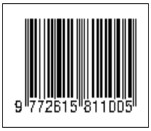MOTIVASI PEKERJA TERHADAP PENGGUNAAN ALAT PELINDUNG DIRI (APD) PADA PROYEK GEDUNG APARTEMEN THE UMALAS SIGNATURE
Abstract
BPJS Employment data revealed that work accidents reached 153,044 cases throughout 2020. Based on the location of the incident, in the work environment work accidents occur as many as 68.5 percent of cases. The provision and use of personal protective equipment is an effort to improve occupational safety and health. Work experience and selection behavior of PPE types affect adherence to PPE use. From the results of an initial survey conducted on August 19, 2022 using the interview method with contractor staff at The Umalas Signature Project in charge of K3, during the project which has been approximately 5 months, no training on K3 has been held for workers even though work accidents are dominant because construction workers are careless and undisciplined in the use of personal protective equipment. There are three factors that can affect the use of personal protective equipment from workers, namely psychological factors, individual factors, and organizational factors. Data was collected by questionnaire and interviews with 39 respondents, then the data was analyzed using quantitative descriptive data analysis methods and scoring analysis. Data analysis was conducted to determine the most dominant factors influencing worker motivation in using personal protective equipment (PPE) and to measure what is the level of motivation of workers in using personal protective equipment (PPE) based on individual, psychological, and organizational factors. The results of this study are the most dominant factors influencing worker motivation in using personal protective equipment (PPE) are organizational factors in the FO 3 statement item with a percentage value of 95% and an average score of 4.5 (very strong). Then based on multiple linear regression analysis tests, Individual Factors showed an influence value of 44.4%. Psychological factors show an influence value of 41.4%. Organizational factors showed an influence value of 67.1%.
Keywords
Full Text:
PDFReferences
Bryan Alfons, J. E. Ch. Langi, & D. R. O. Walangitan. (2013). Manajemen Risiko Keselamatan Dan Kesehatan Kerja (K3) Pada Proyek Pembangunan Ruko Orlens Fashion Manado. Jurnal Sipil Statik, 1(4), 282–288. https://ejournal.unsrat.ac.id/index.php/jss/article/viewFile/1392/1101
Ghozali, I. (2016). Aplikasi Analisis Multivariete Dengan Program IBM SPSS23 (Edisi 8). Badan Penerbit Universitas Diponegoro.
Hidayat, B., Rudy Ferial, & Novia Anggraini. (2016). Kecelakaan Kerja Proyek Konstruksi Di Indonesia Tahun 2005-2015. Prosiding Konteks 10, October, 1–9. file:///C:/Users/ihsania/Downloads/2016konteks10-benny.pdf
Ita La Tho, Fernita Purnama Sari Indah, & Ela Kania Puji. (2019). Analisis Pengawasan Petugas Safety Dengan Kepatuhan Penggunaan Alat Pelindung Diri ( Apd ) Di Proyek Pembangunan. Jurnal Ilmiah Teknik Dan Manajemen Industri, 2(2). http://openjournal.unpam.ac.id/index.php/JITM/article/download/3963/3015
Kemenkes RI. (2020). Info Data Terkini Keselamatan Dan Kesehatan Kerja. Kemenkes RI.
Mangkunegara, D. . (2013). Manajemen Sumber Daya Manusia Perusahaan. PT. Remaja Rosdakarya.
Ramadisu Mafra, Riduan, & Zulkifri. (2021). Analisis Kepatuhan Penggunaan Alat Pelindung Diri ( APD ) Pada Peserta Pelatihan Keterampilan Tukang dan Pekerja Konstruksi Compliance Analysis of Personal Protective Equipment ( PPE ) Uses For Workers and Construction Workers Skills Training Participants. Jurnal Arsir, 5, 48–63. https://jurnal.um-palembang.ac.id/arsir/article/viewFile/3362/2488
Riduwan. (2016). Variabel-Variabel Penelitian. Alfabeta.
Saragih, Vita Insani, Kurniawan, Bina, & ekawati. (2016). Analisis Kepatuhan Pekerja Terhadap Penggunaan Alat Pelindung Diri (APD). Jurnal Kesehatan Masyarakat, 4(4). https://ejournal3.undip.ac.id/index.php/jkm/article/view/14334
Sugiyono. (2017). Metode Penelitian Kuantitatif, Kualitatif, dan R&D. Alfabeta.
DOI: https://doi.org/10.35327/gara.v17i3.509
Refbacks
- There are currently no refbacks.
Copyright (c) 2023 GANEC SWARA

This work is licensed under a Creative Commons Attribution-ShareAlike 4.0 International License.
TERINDEKS
|
_______________________________
Ganec Swara
Published by UNMAS Denpasar K. Mataram |
Email: ganecswara@gmail com; aminullahmtk@gmail.com

This work is licensed under a Creative Commons Attribution-ShareAlike 4.0 International License.











